A shed can add a lot of utility to your yard, providing you with room to store your tools and yard equipment.
What’s more, a shed can completely transform the look of your grassy backyard, turning something that is fairly ordinary into an elegant and picturesque setting. Available on the market are a plethora of shed types that blend function and aesthetics perfectly.
Let’s look at 37 different types of sheds for your future home and a brief guide on what you should look out for when picking one!
Types Of Sheds For Your Future Home
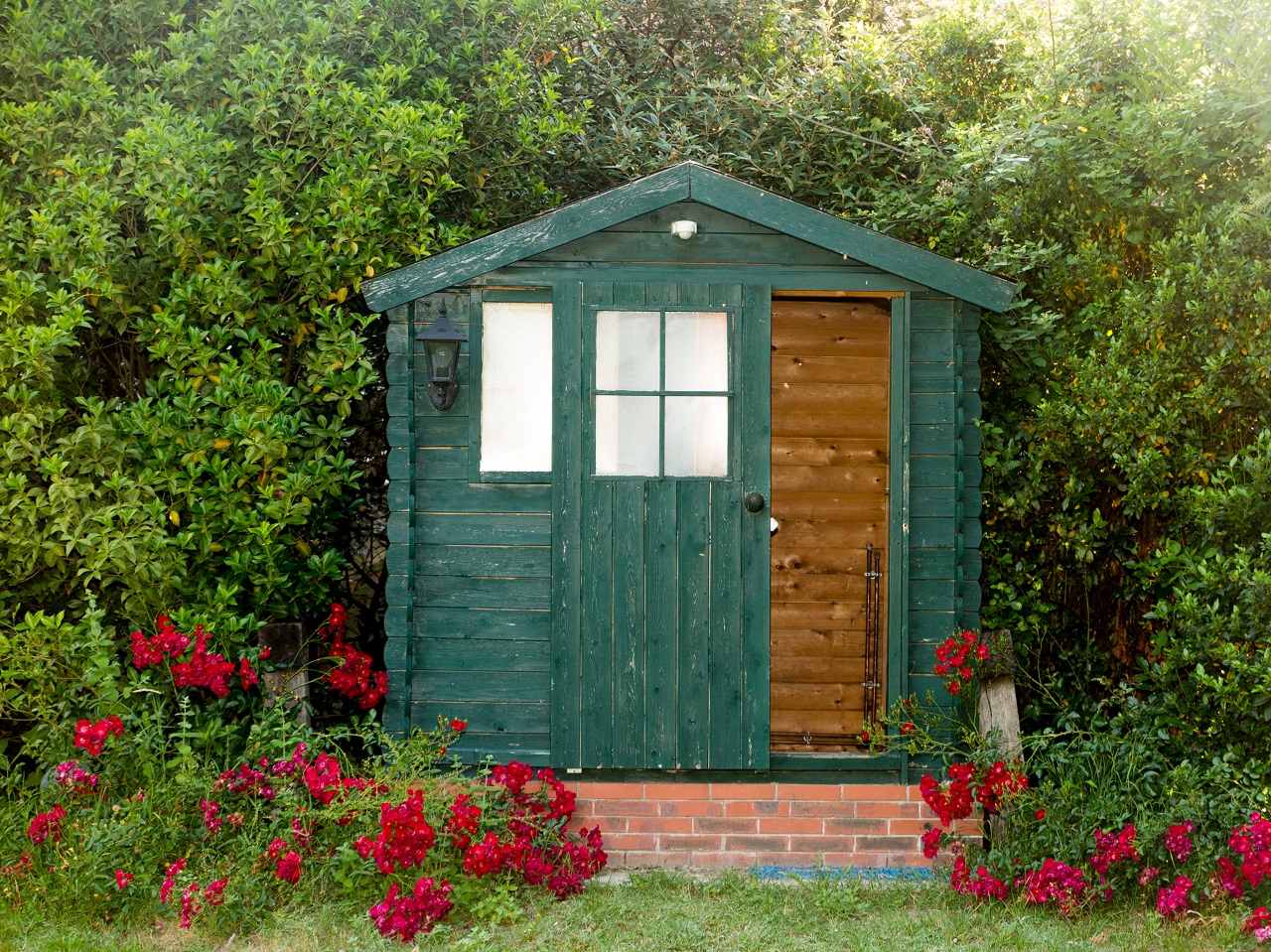
1. Gambrel Sheds

With undeniable charm and an eye-catching appearance, the Gambrel shed will surely enhance your backyard’s aesthetic appeal.
A Gambrel shed offers you headroom that often isn’t present in other types due to the steeply sloped roof. But this barn-style shed affords you space both vertically and horizontally.
The Gambrel-style shed is well-suited for storage of all kinds. Be it garden equipment, storage bins, bikes, tools, or something you want to stow away for a while, a Gambrel shed will fit your needs.
Moreover, a Gambrel shed can be used as a home office or a workshop, making it far more than an aesthetic ornament for your yard.
2. Gable Sheds

When thinking of an outdoor storage shed, the first thing you picture is likely a Gable-type shed with a gently sloping roof.
The good thing about a Gable shed is that it’s an A-frame shed type that fits all properties regardless of the aesthetic schemes. And since these are so common, you’ll have plenty of room for customization.
As for storage, Gable sheds are typically not exceedingly large, being only big enough to store gardening tools, equipment, or a motorcycle or two. I made full use of the customizability in one of my older gable sheds and transformed it into a combination of workshop and equipment storage.
3. Saltbox Sheds

Saltbox sheds appear like small houses that can be color-coordinated with your home to make them seem like an extension of the main property. These sheds can even be scaled in size quite easily, making them suited for a vast range of use cases.
The roof of a saltbox shed has an asymmetrical quality to it, with one side being shorter than the other. This fashionable asymmetry can be complex to replicate on your own, so it’s generally better to purchase these sheds from retail stores.
In addition to storage, saltbox sheds can be used as playhouses for kids. Combined with a visually striking design, saltbox sheds are popular among property owners with various needs.
4. Lean-To Sheds

For DIY connoisseurs and homeowners on a budget, a lean-to shed is a great option for a backyard storage structure. It’s called a ‘lean-to’ shed because it leans on one of the walls of your house. Meaning, the shed only needs three walls and a sloping roof to be prepped up and ready.
They can be as large as you want them to be and run along the walls of your home as far as desired. And since they are close to your home, you can store a variety of objects, tools, yard toys, barbecue grills, and more. It’s the personal touch of lean-to sheds that makes them all the more appealing.
5. Clay Tile Sheds

Clay tiles give any structure a vintage home-like aesthetics, along with an appearance that makes it seem like a permanent structure. When used to construct shed roofs, they can easily be matched with your property in terms of visual design.
If you decide to make a shed with clay tiles, remember to provide it with a foundation strong enough to handle the tile weight. After all, no one likes handling the mess that is a collapsed shed.
Clay tile sheds are typically not available from a specific manufacturer, requiring you to either build them yourself or hire a contractor for the purpose.
6. Sheet Metal Sheds

Known for their durability, sheet metal sheds are fireproof, insect-proof, and highly resistant to weather. Moreover, they can withstand issues like fungi, mold, and moss that are born as a result of the weather.
Of course, the strength of your metal shed depends largely upon the kind of material and its thickness. Sheds made from thinner metal, such as aluminum sheds, may become damaged easily, which is why alloy steel is a safer option with enough thickness.
Either way, a sheet metal shed will last upwards of a decade if you choose to install one.
7. Green-Roofed Shed

If you’re looking to be one with nature, you may want to look into green-roofed sheds. These blend into the surrounding flora, making them appear as if they belong in the woods.
The roof is made with a damp-proof membrane of mosses that stops all moisture from soiling the belongings you store in the shed. Any water that comes in contact with the moss layer will only promote its growth, making it desirable for tropical areas with high rainfall.
If your home reflects a rustic feel, then a green-roofed shed will fit right in your backyard.
8. Sheds With Roofing Shingles
Constructing a shed with roofing shingles that match those of your home is a very cost effective way to make a home design statement. And with high-quality shingles, your own shed will not need replacements or repairs for a long time.
Being one of the more DIY-friendly projects that you can take, you can further save up money on installations. Moreover, if you choose to install roofing shingles for your home and the shed simultaneously, they’ll age together without any changes in appearance.
9. Sheds With Cement Block Base

For backyards with properly leveled ground, a shed with cement blocks as its foundation is an option worth considering. Though it takes some effort to set up the blocks properly, the process itself is a fairly straightforward process.
Installation is as simple as stacking cement blocks on the surface in a rectangular fashion. Once the construction is tall enough, either install a roof or further extend its height with other materials or a pre constructed shed.
These sheds can’t support exceedingly heavy items, so pick these if all you need it for is to stow away your garden tools.
10. Sheds With Concrete Pad Base

Sheds with a concrete pad base are ideal for storing heavy items and equipment, making them well-suited for machinery and even vehicles. These floating slabs are ideal for places where snowfall or frost are not common occurrences.
Their durability is undeniable, which is why they are some of the most popular shed options. Once built, these sheds become a permanent fixture in your backyard, so be sure to pick the right spot!
The only couple of things that you need to be mindful of are the cost and their vulnerability to water. To put it in comparison, a shed with a concrete pad base is roughly three times the cost of a gavel shed.
As for their vulnerability to water, concrete pads often face rain water stagnation underneath the base of the shed. This may cause the pads to rot from the bottom up, and mitigating such damage is difficult due to the weight of the shed.
11. Firewood Storage Sheds

These small sheds are primarily used to store firewood and protect it from the harsh weather outside. This saves you from the frustration of not being able to start a fire with damp wood in your fireplace.
Firewood storage sheds often leave room for airflow so the firewood isn’t in musty or very wet conditions. Additionally, these are built against your home and may have a doorway built into your house, saving you from having to go out in the winter.
These storage sheds go a long way in keeping you comfortable and warm during the winters. So, consider having them installed if you live in a particularly chilly area.
12. Small Shed
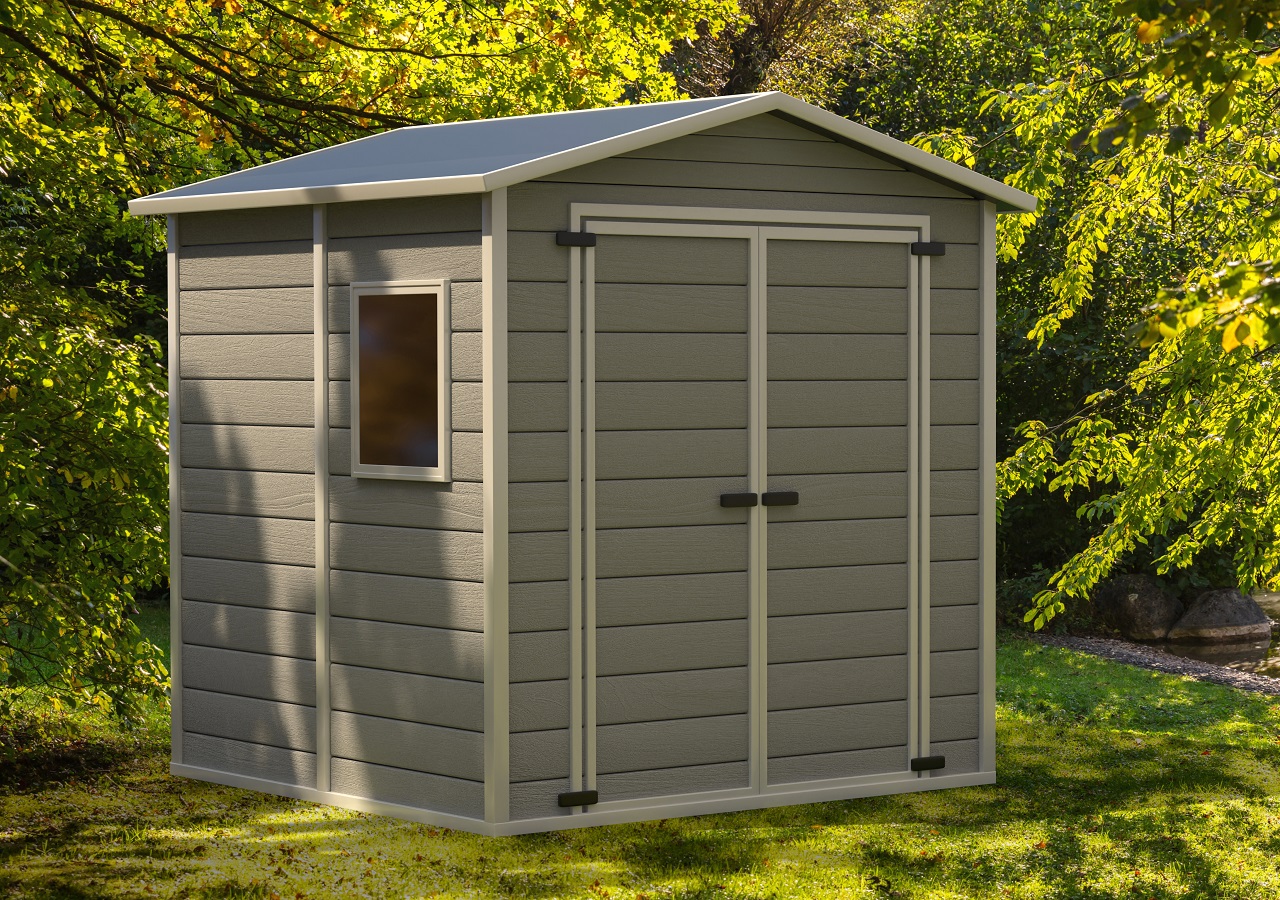
A small shed is more akin to a cupboard or a wardrobe in size, being fit for storing small outdoor tools and equipment. They cost less, cover less area and are convenient to maintain, a quality that I’ve always been fond of.
This shed size is good for a property of any size and typically blends into the surroundings, calling little attention to itself. That said, the limited storage space makes it significantly less future-proof, if you ever consider expanding your equipment collection or tool sets.
For those seeking to make an aesthetic statement with their homes, a smaller shed may not be up for the purpose. You can make it look chic with a clever shed architecture layout or design scheme, but that is generally better-suited for medium and large sheds.
13. Medium Shed
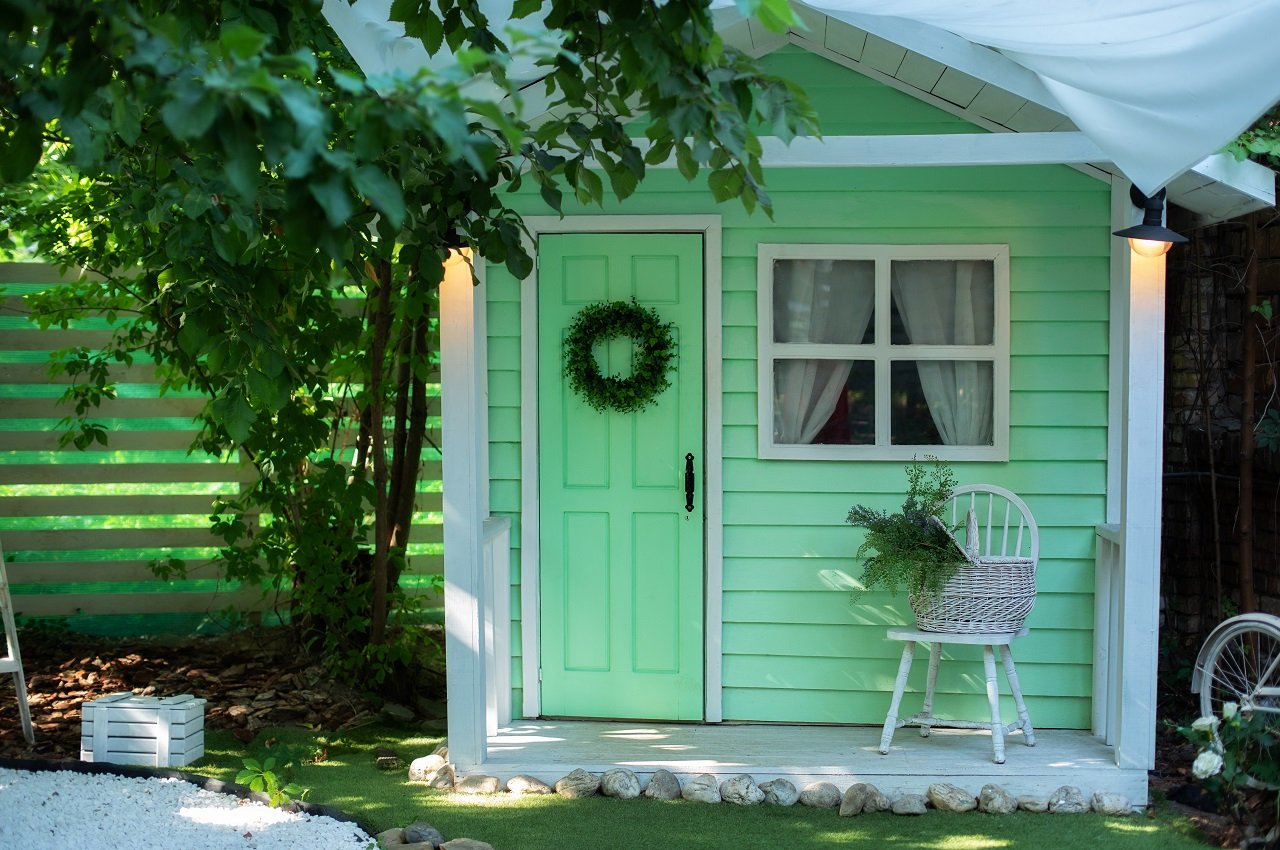
A medium-sized shed has enough room for you to walk in and reach out to the tool you need. This is the logical upgrade to a small shed, offering more ground space and has enough presence to be noticed as a part of the house.
Larger pieces of equipment like lawnmowers can be stored in a medium-sized shed with ease, but nothing more. Say, if you wished to use your shed as a workshop or office, there won’t be enough room to set everything up. I could barely fit in my computer equipment in my old medium-sized shed.
And since a medium-sized shed has a presence in your backyard, you can customize it to either stand out or blend in with your house. Consider combining different aesthetic ideas to make the shed truly unique.
14. Large Shed
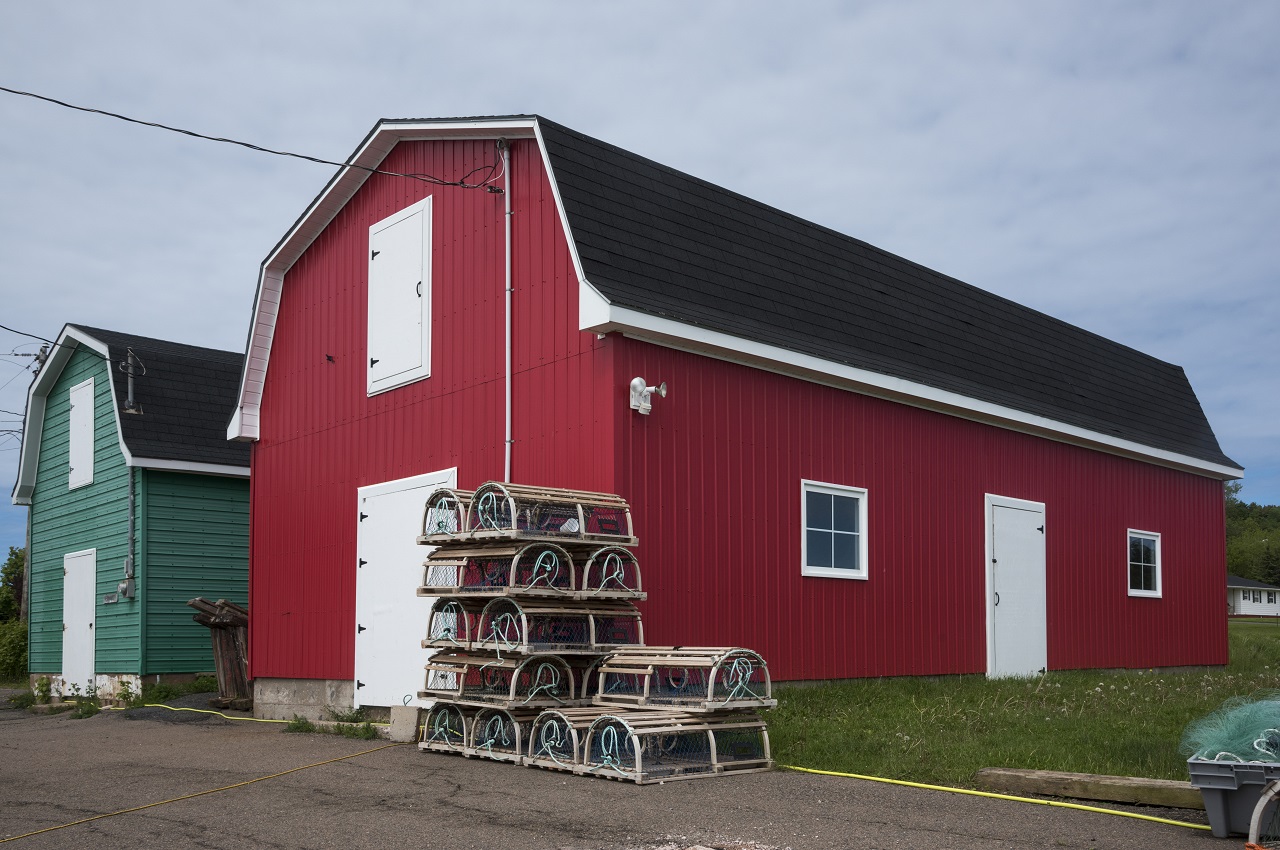
Think of large sheds as medium-sized sheds, but blown up to a life-sized scale. In addition to everything that you can store in a medium-sized shed, you can keep potted plants and a small workshop in your large shed.
As for office spaces, large sheds aren’t particularly exceptional as depending on the room you need for working, you may still end up feeling cramped. If all you need is a desk and enough electrical functionality to run a laptop, you can make do with a large shed.
And as far as aesthetics are concerned, you can get really creative with large sheds. Since they have a prominent presence in the yard, you can make visual tweaks to your heart’s content.
15. Extra-Large Shed
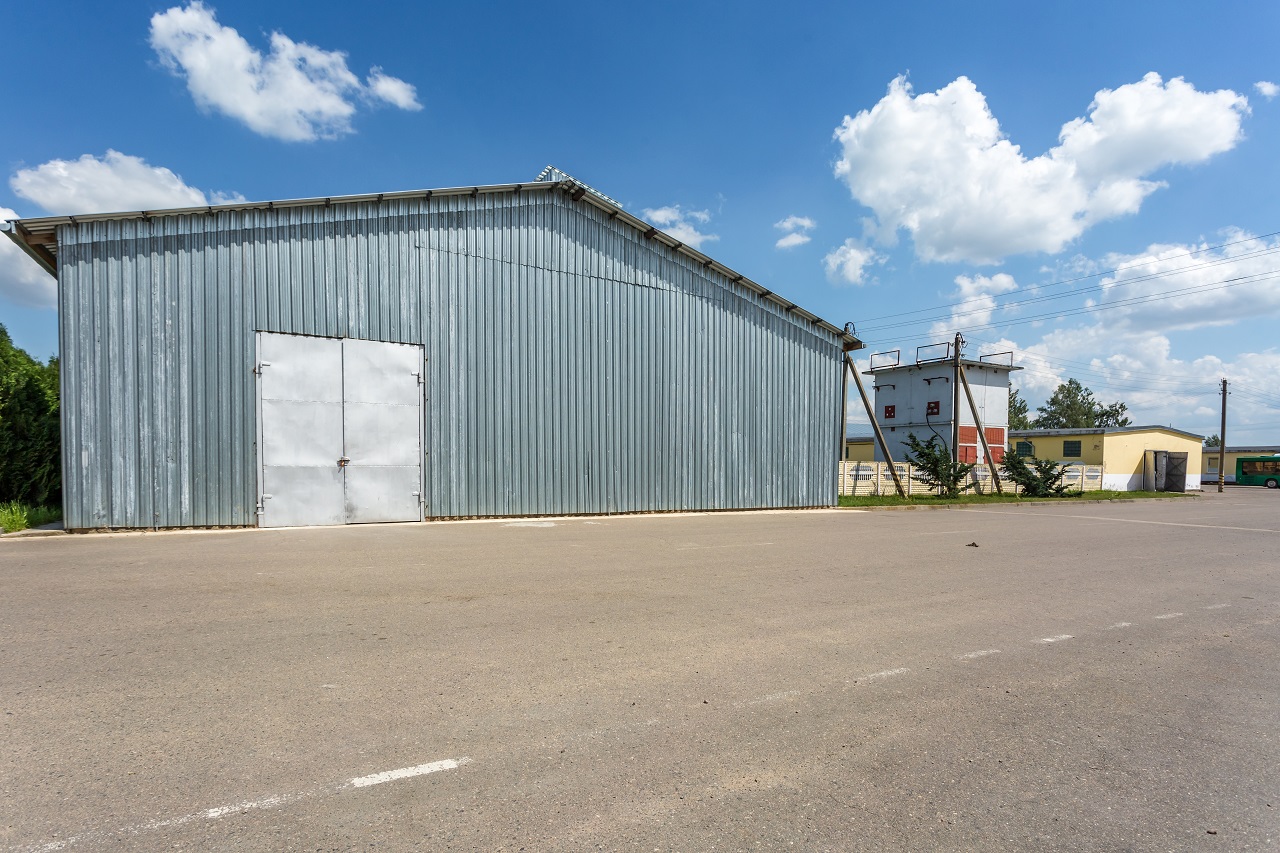
You can have all the room you could ever want in a shed with an extra-large shed. Vehicles, equipment, toys, a workshop and extra items from your home can all be stowed away safely in an extra-large shed. For farmers, an extra-large shed is the ideal shed type.
The shed has enough head space for people of all heights, so you won’t have to worry about banging your head against the ceiling. If you’re like me and adore gathering friends and family occasionally, you can consider using these sheds to function as a setting for a party. Rest assured, your guests will have ample room to roam about comfortably.
16. Garden Office Sheds
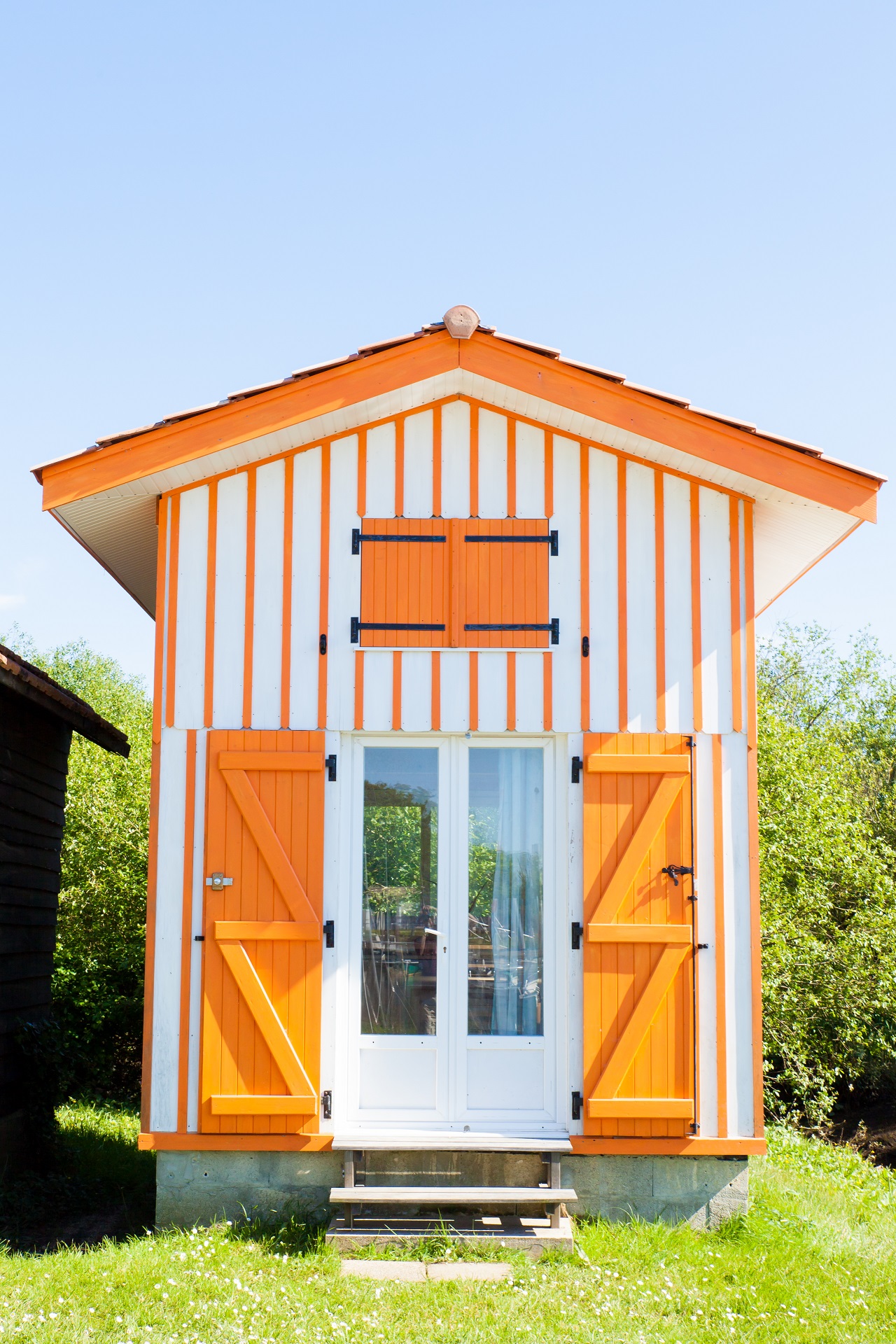
Having an office setup in a tranquil environment can do wonders for your productivity. This is especially true if you live in a bustling neighborhood or have a large family. Its cost-effective and easy-to-install nature keeps frustrations at the minimum for everyone involved.
A shed in your garden made specifically for your professional purposes is an ideal prospect to keep your working spirit high. If you’re like me, you may find it easier to go through your workflow or focus on a task at hand. And with a high-quality shed, you can keep all the distractions out to make it even more convenient.
For aspiring artists, musicians and hobbyists, a garden office shed is the best place to have your creative groove going. Find your inspiration and create something that is truly yours in a garden office shed.
17. Vinyl Sheds
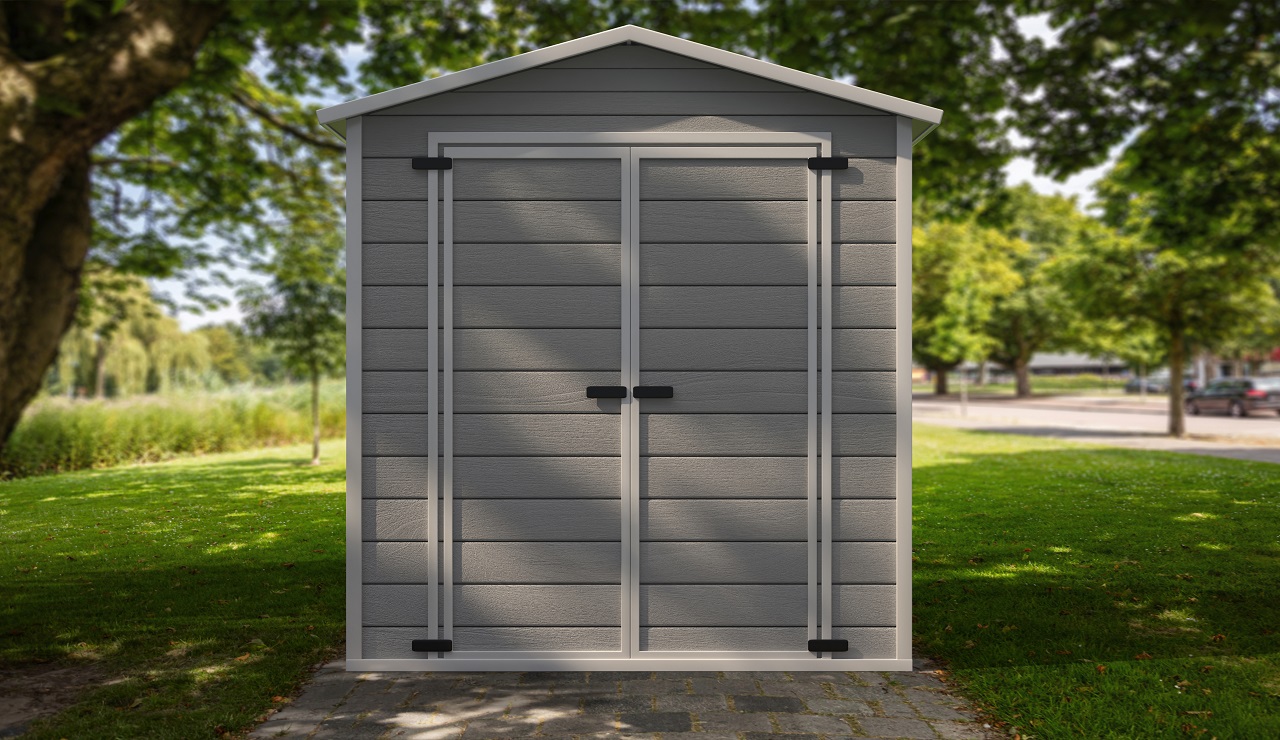
If you scour the market for a premade shed, chances are you’ll be looking at a vinyl or plastic shed. Boasting high durability under harsh weather and low maintenance, vinyl sheds offer a permanent solution to your backyard storage issues.
Vinyl or plastic sheds are highly resistant to rot and insect damage and are waterproof. Even if the sides show moss growth, you can simply take your time with getting rid of it. The moss will cause your shed no harm.
As with most things, the prices of vinyl sheds go up the higher the quality is. But it may very well be worth the price if your daily schedule is too packed for painting or refinishing later on in its life.
18. Wood Storage Sheds
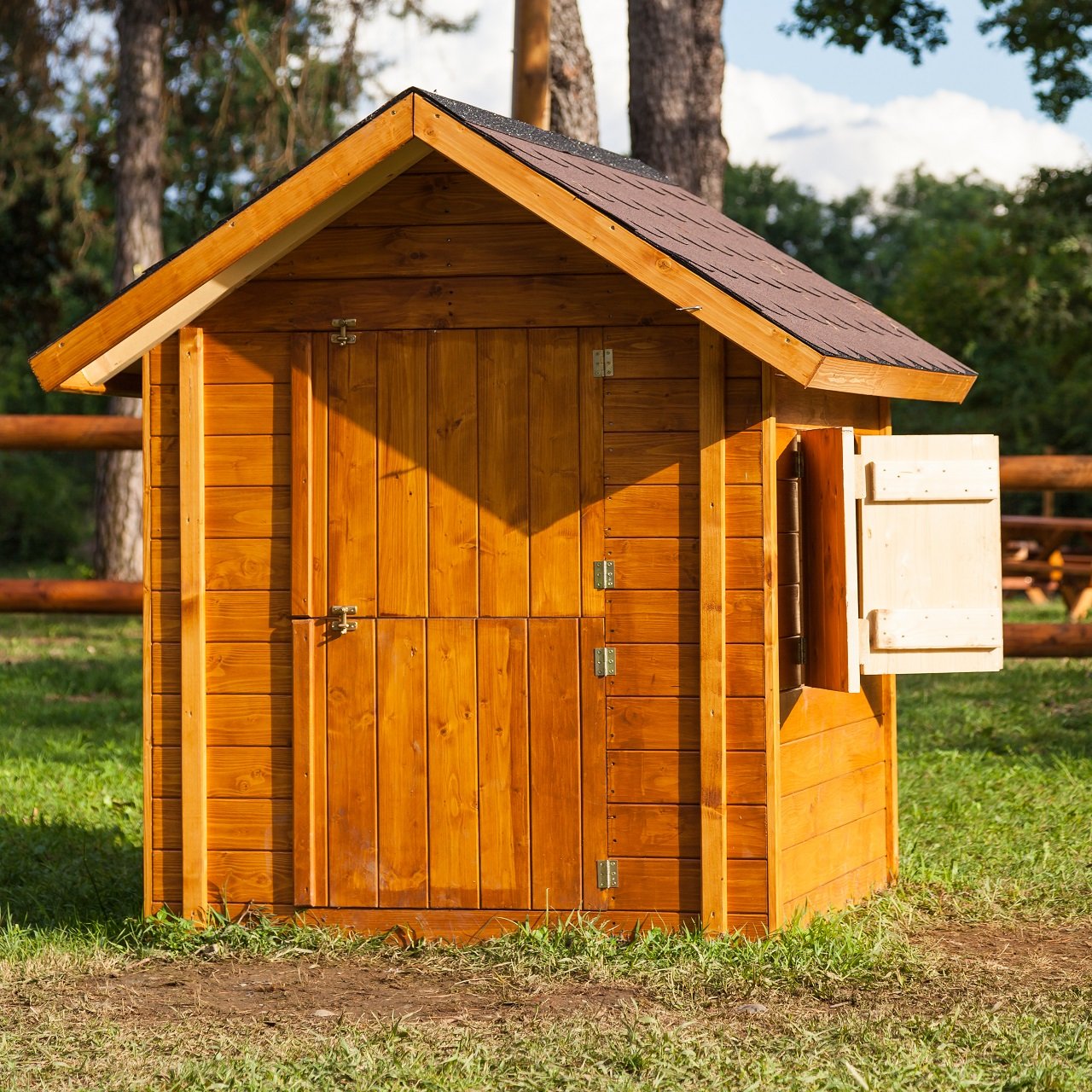
Be it aesthetics or function, wood sheds are the most popular shed type, especially for those using their timber frame sheds as an office or playhouse. Wooden storage sheds make for a more natural extension of your home and are more customizable than their plastic or metal counterparts.
Typically, it’s fairly simple to add usable space in a wooden shed during renovations. That said, wooden sheds are quite high-maintenance, meaning you’ll be spending a lot of time trying to keep yours termite and mold-free.
You’ll want to repaint them every once in a while, though, to protect them from these pests, the weather, and aging.
19. Garage / Storage Sheds
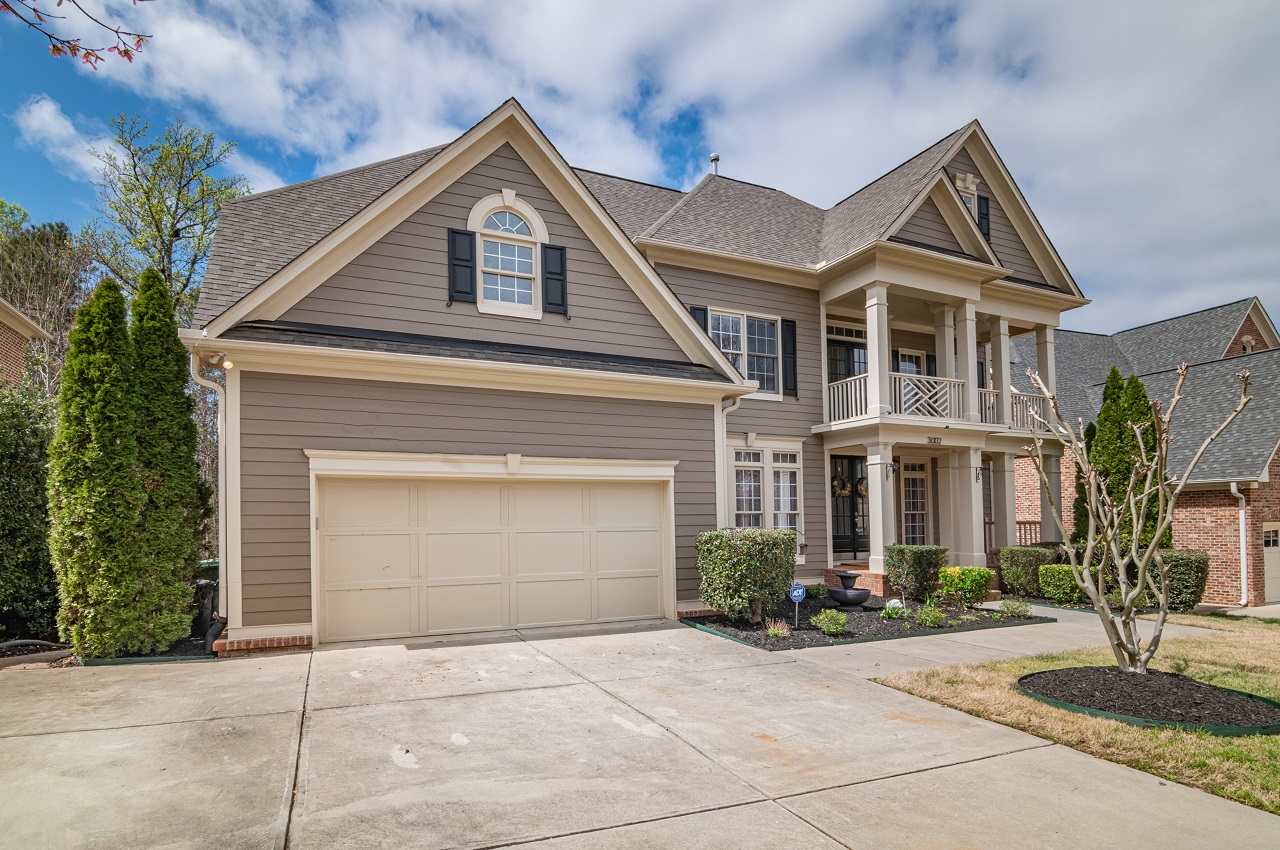
Don’t want to allocate extra space for a shed and garage separately? Why not combine them both?
A garage/storage combo shed conjoins the use cases of a garage and a storage shed. This results in a shed that takes up a little more space than either but significantly less than the two separately.
Depending on the size you choose, the combo shed will have ample space for a vehicle, a large gardening tool, and several shelves for other equipment. And with just a little space management, you can even store a bicycle or two on the walls. You simply can’t go wrong with this shed type!
20. Craftsman Sheds
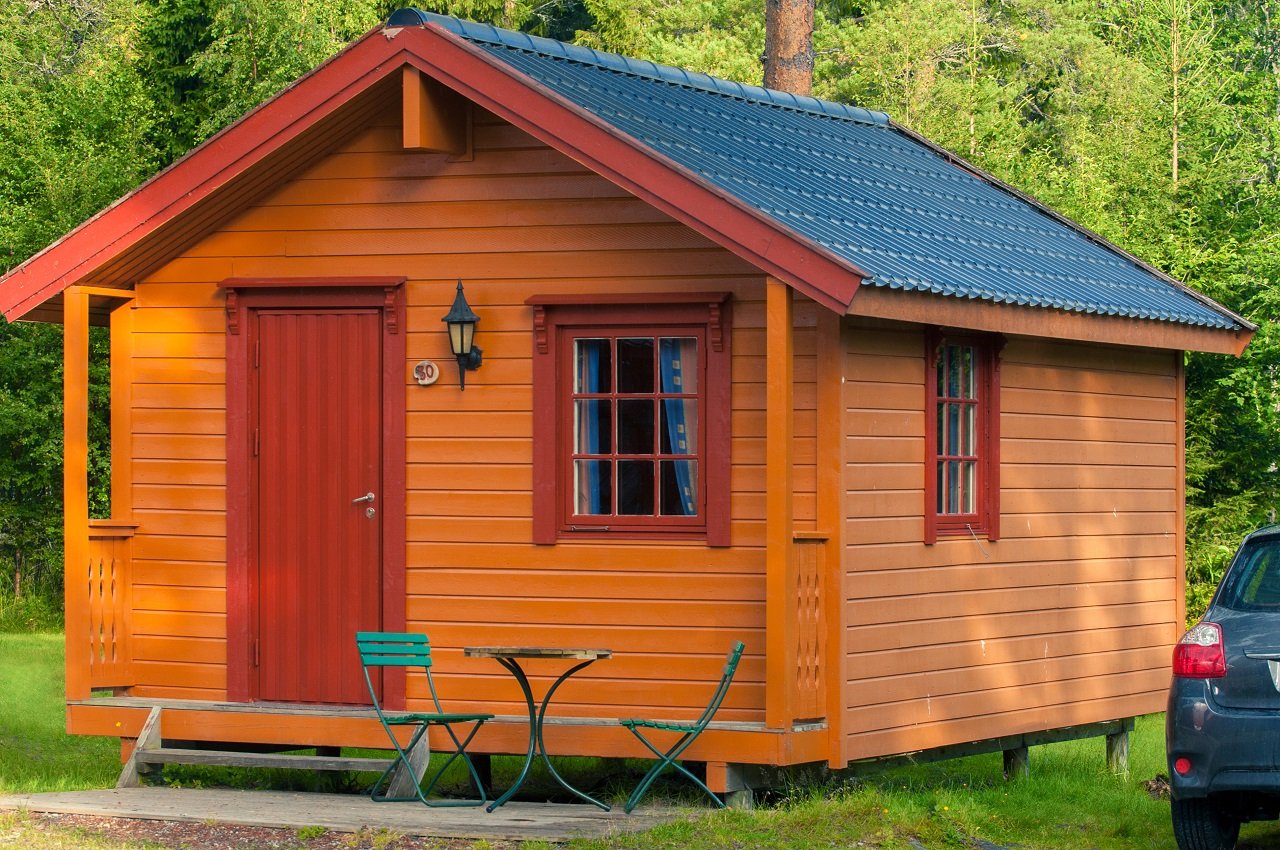
Low maintenance, large windows for ventilation, and easy to install- you’ll find everything you need from a workshop in an artisan shed. These types of sheds provide you with additional storage for machinery, tools and equipment of all kinds, in addition to the space for large tables.
Craftsman-style sheds are undeterred by snow and rainfall, allowing neither to deposit on the roof even during the harshest of winters or monsoons. And easy assembly means that you won’t have to wait long to get started with your personal projects again.
However, heavy winds can be troublesome for artisans working in these sheds due to large ventilation openings, causing them to wreak havoc on their workshops.
21. Flat-Roof Sheds
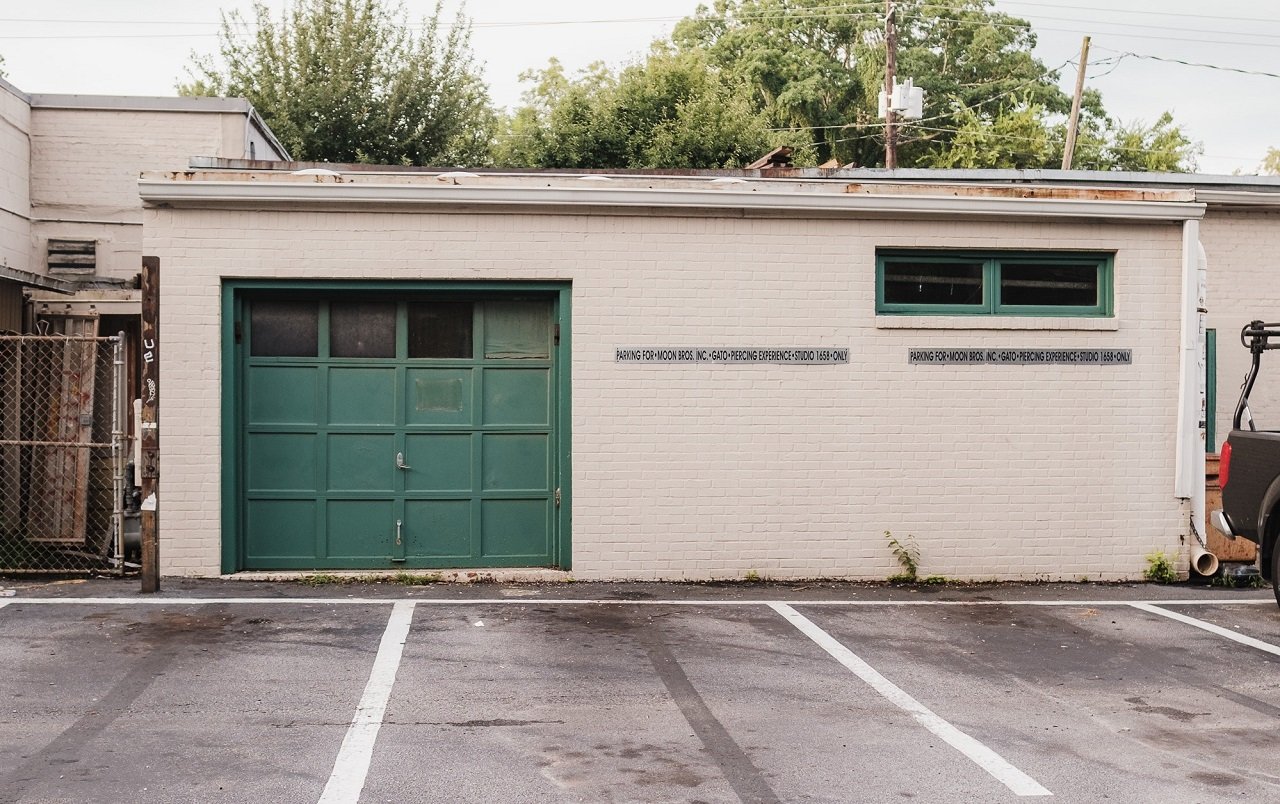
If you prefer a shed that is low-key and goes unnoticed when someone looks at your home, a flat-roof shed can fit the role.
Flat roof sheds have a construction that nearly matches traditional backyard sheds, with the exception being the height of the walls. You’ll find that most flat roof sheds have walls of nearly identical heights.
Having a flat roof shed installed is quite light on the wallet, making them ideal for those looking for function alone from their shed. And since a flat roof shed doesn’t require much precision to be installed, even a beginner can do it on their own.
22. Victorian-Style Sheds
Fancy a flashy shed that stands out in your backyard? A Victorian-style shed will do precisely that, with an elegant construction and a framework that serves to enhance its beauty several folds over.
Owing to its extensive construction, a Victorian-style shed can withstand even the harshest of temperatures and weather conditions. And since it’s made of durable material, you won’t have to worry about replacing it for many years to come.
Victorian-style sheds are a premium shed type, meaning that the beauty, elegance, and function don’t come in cheap. That said, if you’re seeking to make a fun and visually striking addition to your home, you can’t go wrong with them.
23. Quaker Shed

Quaker sheds have a traditional look that offers a large amount of space with a roof overhang that distinguishes them from other types. If you prefer a quaint and home-like visual design for your shed, a quaker shed may be the one for you.
Since they are built to provide more storage space, you can choose to scale their size up as much as desired. With them, you’ll find both function and aesthetic appeal, providing you with ample space to accommodate doors as large as garage doors.
24. Mansard Sheds

The mansard roof is one of the more complex designs to build for sheds, more so than something like the gable shed roof.
This type of shed has two slopes contained within one on either side, giving it a unique appearance that provides extra space for an attic overhead. The roof is steeper on the lower half, making it so that there is barely a pitch of the roof.
Being a complex design that is typically foreign to the average DIY-builder, you will need help from the experts to assemble one. And since you need experts with knowledge about this relatively lesser-known type of shed, it may end up lightening your wallet considerably.
25. Octagon Sheds
This gorgeous eight-edged shed style can find its home in a property that’s right next to the countryside. You can expect these to never go out of style, giving your home a timeless feel for several years to come.
Other shed types scarcely rival the high level of customizability that octagon sheds offer. You can choose a preferred roof steepness, shed size, roof shingle style, and smaller details like vinyl-wrapped frets.
With so many things to consider and more walls than a typical shed, octagon sheds are not very DIY-friendly. This may necessitate the help of contractors, which can be a point of contention for those preferring a personal touch.
26. Man Caves
Some men crave having a space that they can call their own without any interruptions from others. Man caves offer personal space for such men, giving them room to indulge in hobbies with friends.
Think of a man cave as a way to recreate the good ol’ days in the college dorm rooms where people could wander as they pleased. The point of a man cave is to replicate that freedom, where men don’t necessarily have to be prim and proper for social events.
27. Modern Sheds

Modern aesthetic sense has been all about minimalism, typically involving painting everything a clinical white to maximize natural light reflections. The inclusion of large windows, skylights, and doors supports this aesthetic sensibility as well.
Contemporary designs make use of sharp lines and angles, keeping the design language simple and effective. These sheds are generally made from a durable material like metal or wood and are quite bold about their use case.
You can also opt for a retro-modern look with the design sensibilities of the 1950s and 1960s. Typically made from wood, you can use your modern shed as a workshop or a storage unit.
Modern sheds can make use of shed design software in planning stages. This gives you a better idea of what the shed will look like in your backyard well before construction.
28. Studio Sheds
Typically larger than other shed types, studio sheds have additional quality-of-life features that make them the ideal workplace sheds for artists, musicians, and remote workers.
The high level of customizability that studio sheds offer gives you plenty of flexibility with what features you need, as well as space allocation. Of course, a great amount of planning accompanies a building project like a studio shed, where you have to keep every detail in mind during construction.
Musicians can opt for a soundproofing treatment on their sheds, while artists may want a setup with plenty of lighting and space. And for those with home office setups, you can customize the shed to make it what fits your preferences the best.
29. Sheds With Plastic Grid Foundation
A plastic grid foundation is a recent innovation in the options for shed bases. This foundation type is an affordable one to consider when DIY-building your backyard shed.
Permeable paver products that make up a plastic foundation lay somewhere between paver and gravel pad foundations in terms of functionality. These products function by snapping into place, much like a paver system, once the gravel has been applied to the base.
The result is a strong foundation with ample support across the pad, thanks to the gravel application. This also has the benefit of allowing water to drain through the base.
30. Sheds With Deck Block Foundation
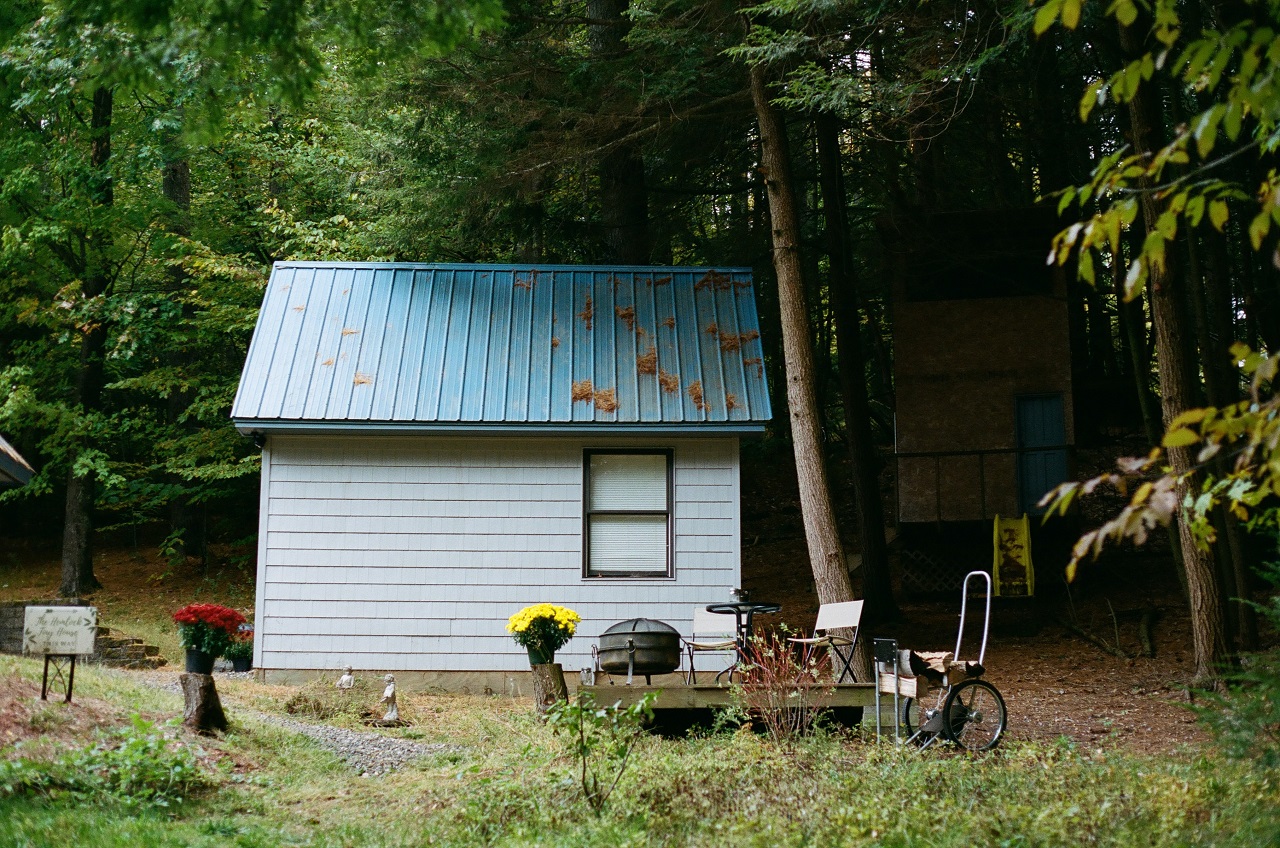
Deck block foundation involves the placement of trapezoidal concrete blocks that support posts and joists alike. The larger surface area at the bottom prevents these blocks from sinking into the soil, adding to the supporting quality of the blocks.
Deck blocks are some of the most affordable options on the market and are similarly easy to install. Since you don’t need to bury posts deeply into the ground, you can scatter them where you want the shed to be and adjust placements accordingly.
It’s worth noting that deck blocks are meant to support new shed construction rather than a pre-built shed. The DIY-friendly nature of deck blocks makes them one of the best foundational materials to build your shed with.
31. Sheds Screw Pile Foundation
Another recent addition to shed foundation types is the screw piles, which have risen in popularity among deck builders.
The gist of screw piles is that large metal piles are screwed into the ground to the desired depth with brackets attached to their top. After this, shed skids are attached to the brackets using power tools.
A key differentiating factor of sheds with screw pile foundations is their ability to be installed on sloped surfaces. You can have each pier set up on a different elevation and still create a properly leveled shed with some help from additional brackets or skids.
Making sheds with screw pile foundations is simpler than making concrete footers, albeit this is offset slightly by the expenses rendered during their construction.
32. Sheds With Skid Foundation
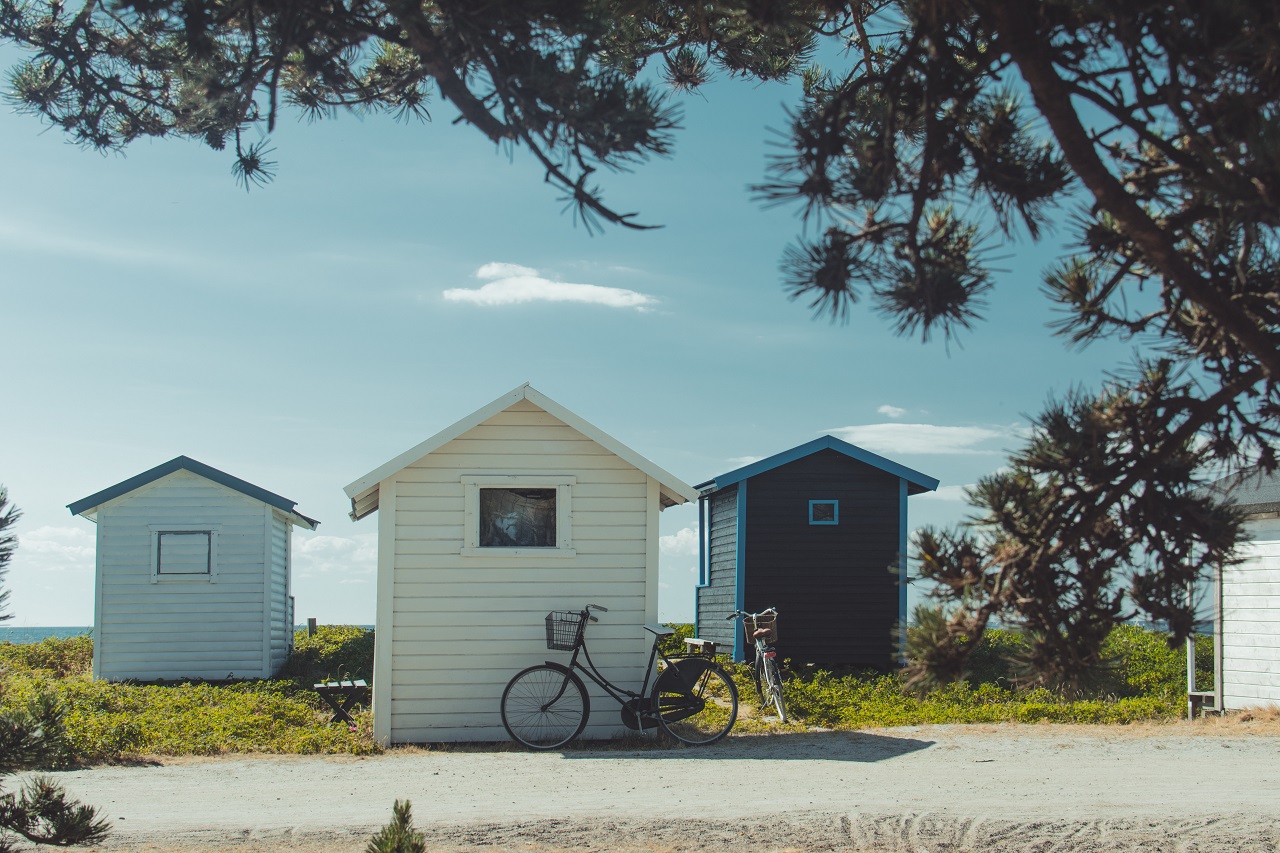
Skid foundations are typically what you see on most pre-built sheds. In sheds with skid foundations, the structure rests directly atop pressure-treated beams or skids. These skids, a.k.a runners, are generally made from wood.
When having a pre-built shed installed in your backyard, ensure that the skids aren’t placed directly on the ground. Doing so will prevent a lot of undue pressure from being directed directly into the skids, which may cause damage in the long run. To prevent this, have the shed be placed on gravel or concrete to act as a secondary base.
33. Concrete Piers
Concrete piers are the answer to all your frost-related shed woes. This is particularly the case if your shed is made from wood, as the shed won’t face any water damage due to the snow melting. You can consider using concrete piers with a layer of gravel to act as a part of the overall foundation.
One of the most prominent advantages of a concrete pier foundation is that it can be used on sloped sites as well. The simplified construction, as well as better shed anchoring, makes it one of the better options for shed construction.
Some states require your structures to meet a footer requirement, and concrete piers help you achieve that to a tee. No matter where you live, having a concrete pier shed foundation will meet most local code requirements.
34. Sheds with Post-And-Beam Foundation
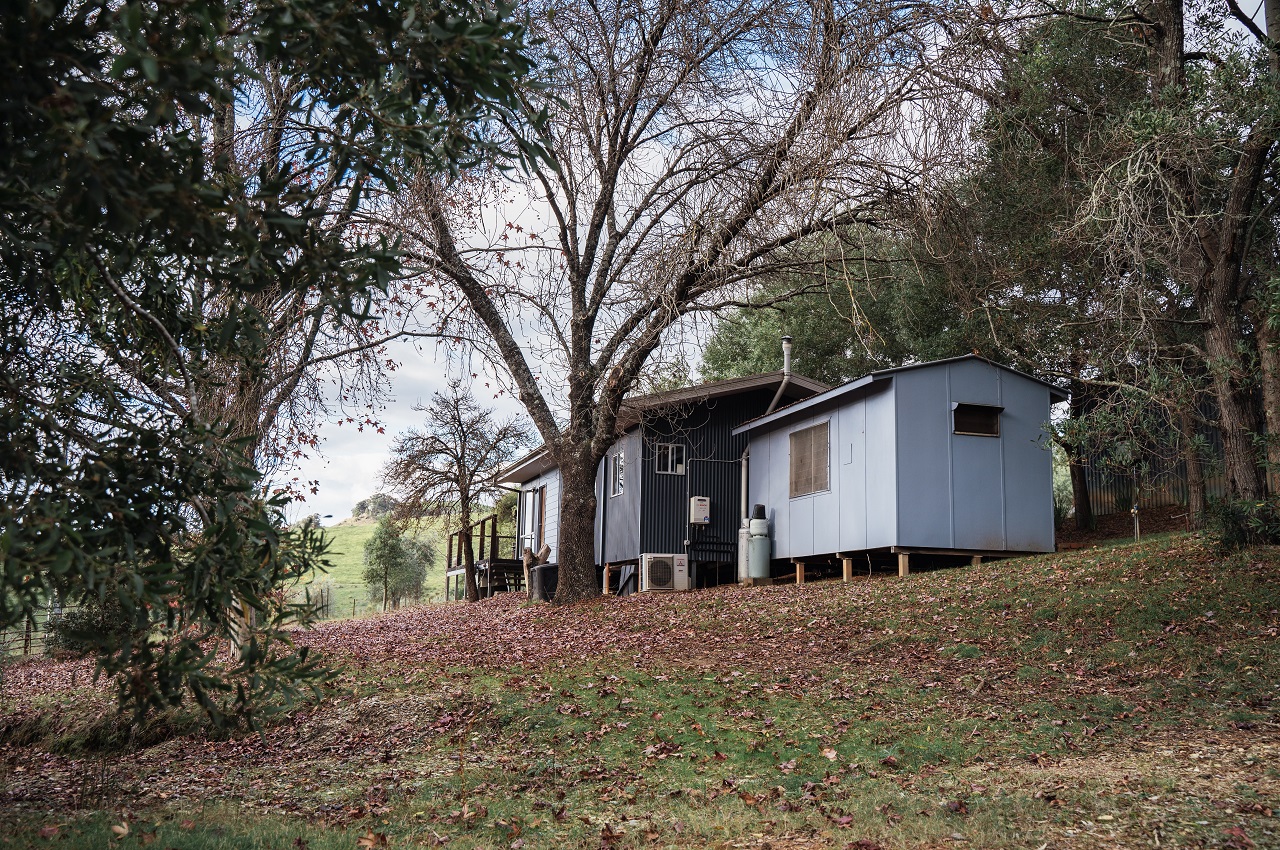
The tried-and-tested post-and-beam shed foundation is another popular option for supporting your shed. It boasts a DIY-friendly construction that is easy enough for anyone with basic carpentry skills to try a hand at.
Anchoring a shed to the post in this foundation type is fairly straightforward, with posts resting on deck blocks, concrete footers, or even bare ground. Concrete footers are typically the best option if you reside in a place with chilly winters.
35. Sheds With Paver Foundation
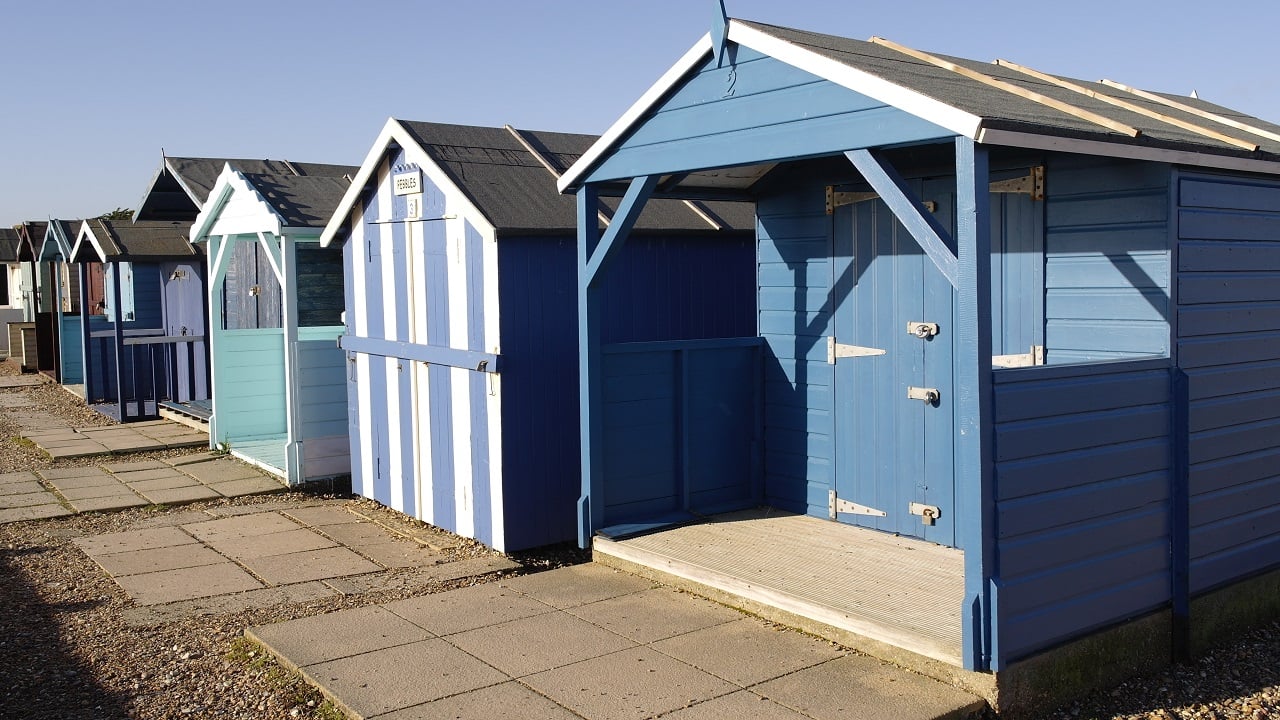
Paver foundations are simple and functional, making them one of the most favorable shed foundations on the market.
Installing pavers on your own is a cinch, and the foundation is capable of supporting all parts of your shed with relative ease. These foundations can be adjusted to match your shed size and usage, which is why they are often one of the most favored shed foundations.
Though pavers can be somewhat tricky to install on sloped sites, for flat surfaces, they are a no-brainer for most shed constructions, DIY or otherwise.
36. She-Shed
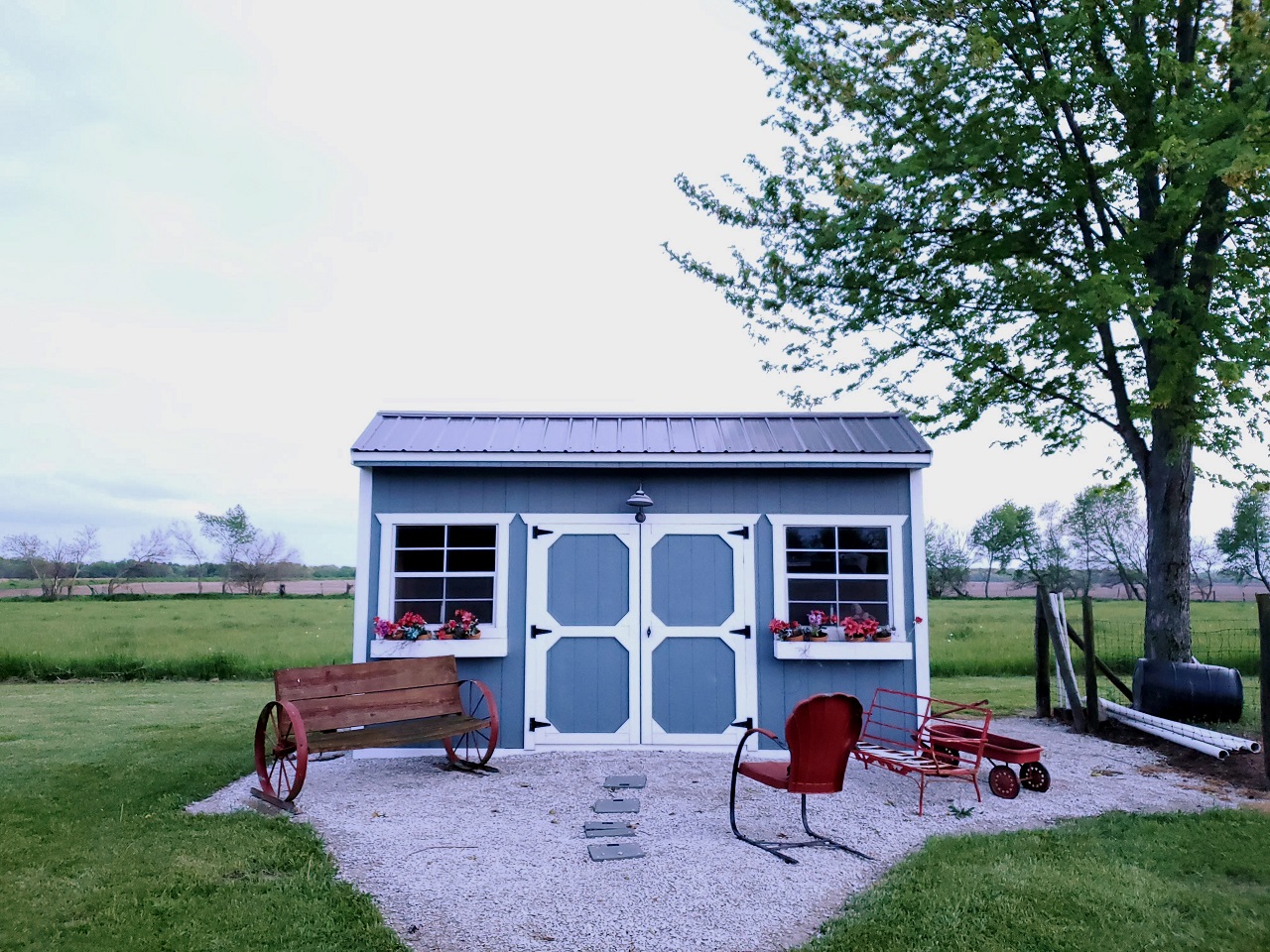
The female version of the man cave, she-sheds are meant for a similar purpose, where women may take some time off their daily routines.
Where she-sheds differ from man caves is that they are largely meant for self-fulfillment rather than being a gathering place for several people. A woman may partake in her hobby, and the shed will be solely dedicated to this purpose.
Just like man caves, she-sheds are known to improve moods, and boost happiness and productivity by taking users’ minds off the mundane aspects of life. Having an identity outside of a fixed routine is quite important for an individual, and both man caves and she sheds achieve this.
37. Greenhouse Sheds
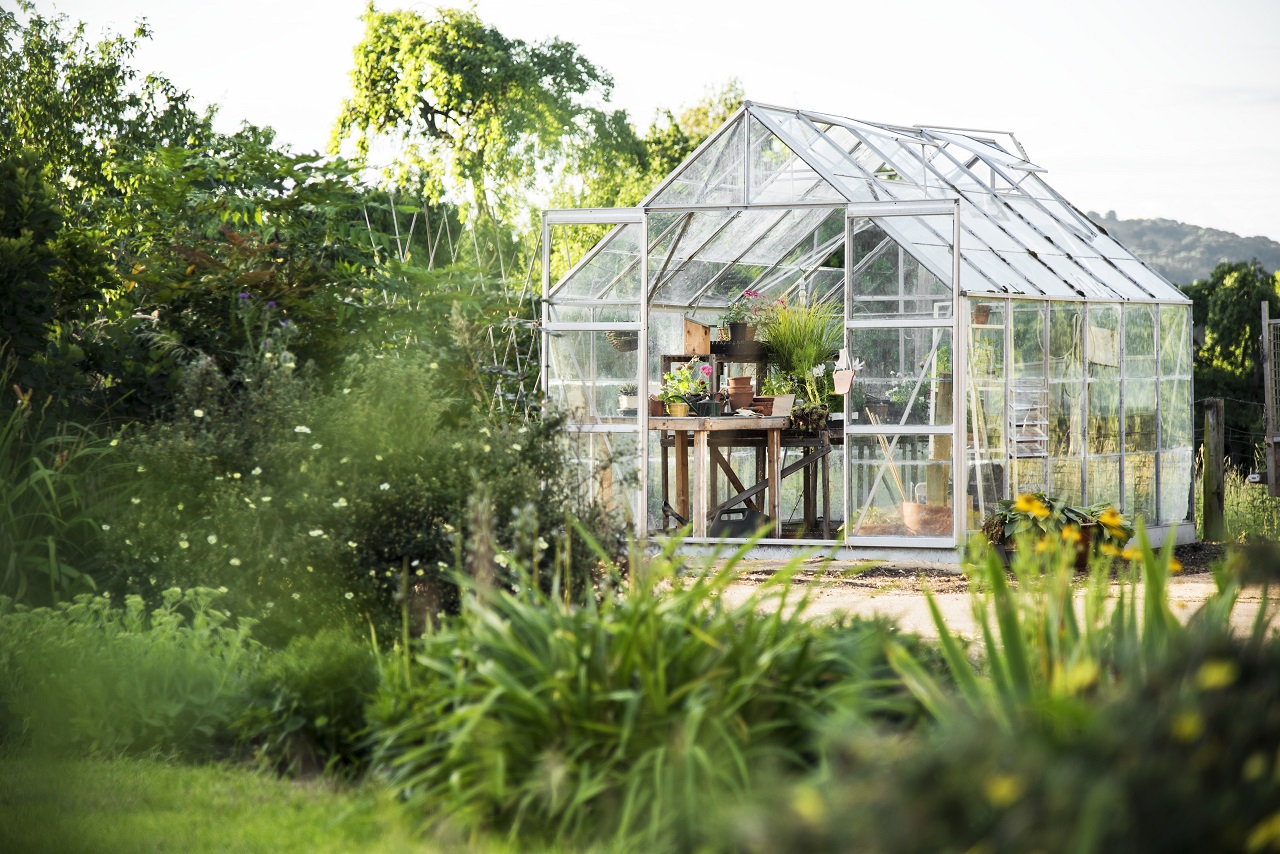
It’s like a typical outdoor storage shed but designed specifically for plants. A greenhouse garden shed enables you to create an atmosphere to keep your plants well-nourished all year long.
The design achieves this by using clear materials like plastic and glass that let in sunlight and keep enough ventilation for a healthy atmosphere. These plastic or glass panes vary in size depending on your nursery size.
Factors like external climate and plant type do play a role in how effective a greenhouse shed is, but less so than an open garden. And depending on what you need, you can customize garden sheds to be what you need.
Considerations To Be Mindful Of When Picking A Shed Type
While shed types are vastly different and appeal to different users, there are a few considerations that they all share. These considerations are insulation, building materials, and appropriate ventilation, and these qualities ensure that your stay in the shed remains pleasant for a long time.
1. Proper Insulation
Insulation becomes an important factor in particular if you live in cold areas. In such areas, poor insulation can quickly turn a shed into a chilly enclosure that you may not be able to stay in for long. Working becomes difficult in such conditions and the functionality of your electronic equipment may suffer from the cold as well.
Hence, you may start with insulating the walls with foil-backed compressed insulation, a material that is capable of maintaining a stable temperature inside the shed. And don’t forget the floor when insulating your shed! An improperly insulated floor can not only make your time in the shed uncomfortable, but it also contributes to heavy temperature swings.
After this, you can begin looking into heating solutions if you stay in the shed for long.
2. Building Materials
The construction quality of your shed depends on the building materials used. A shed that can’t handle its own weight, let alone that of tools and outdoor equipment, is of no use.
What set of building materials is ideal depends largely on the shed type you choose. When picking the shed type, it’s always beneficial to look up what the shed is capable of relative to its size. The more information you gather, the chances of structural issues cropping up reduce dramatically.
3. Proper Ventilation
Sheds become musty and uncomfortable to stay in without proper ventilation, not to mention long-term issues like mildew and mold growth. And if you live in a tropical or temperate area, heat becomes a real issue in ill-ventilated sheds. Hence, the movement of fresh air in a shed is an important part of making sure you stay comfortably in it.
You can opt for passive ventilation through strategically placed vents or windows or active ventilation through a dedicated ventilation system. The former allows free movement of air that is pulled in and out of the shed naturally, while the latter makes use of electric fans.
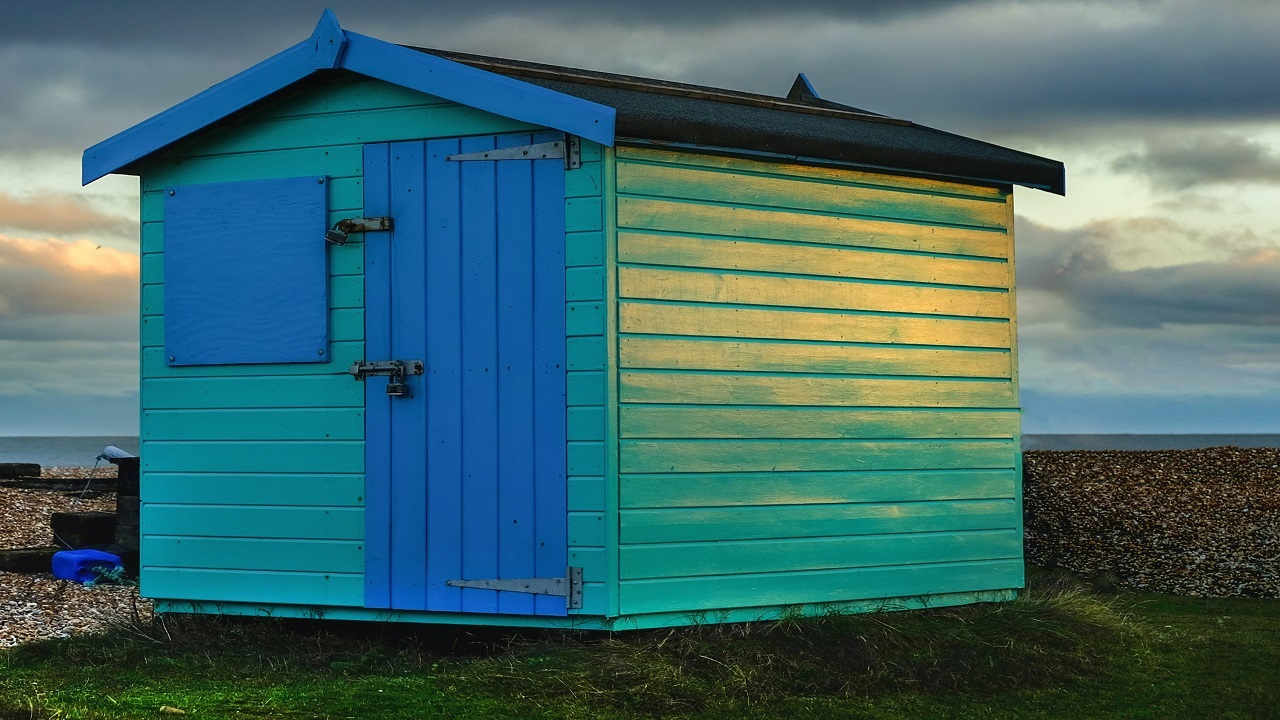
Types Of Sheds Conclusion
These were the 37 most popular shed styles on the market that can complement your future home perfectly. Naturally, picking one out of these can be tricky.
When picking a shed type, chances are there are multiple correct choices for your needs. So, it’s always wise to narrow your uses down one by one to make choosing between these shed types easier.
Keep your needs, budget and building materials in check, and have a fun time building the shed of your choice!


